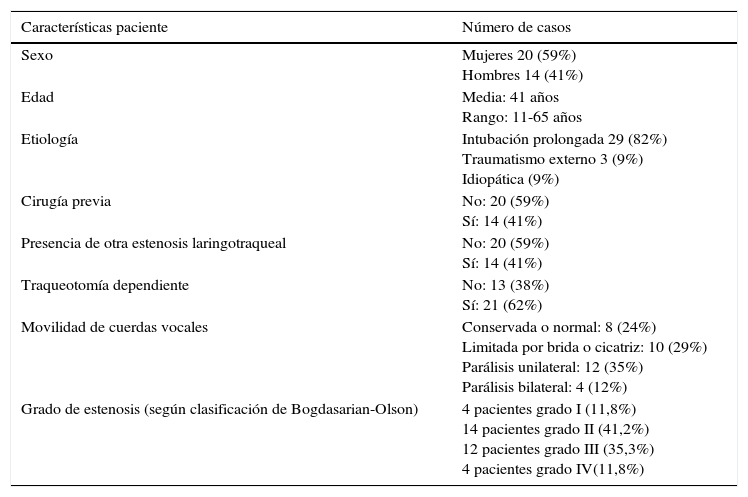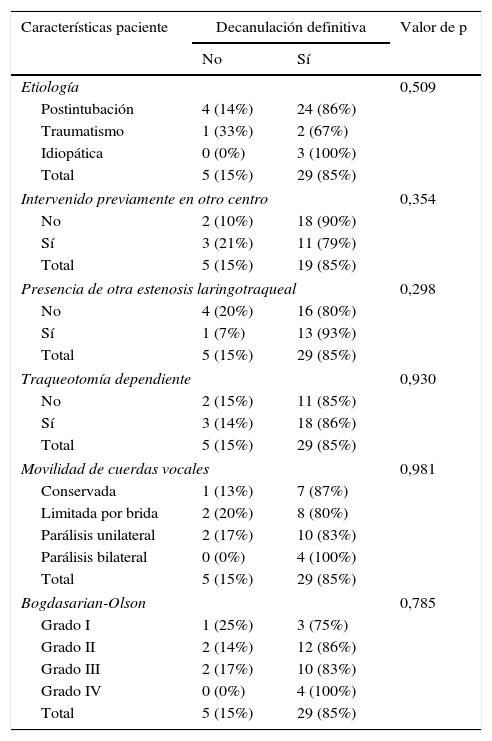Presentar los resultados obtenidos en el tratamiento de estenosis glóticas posteriores cicatriciales.
MétodosEstudio retrospectivo de 34 pacientes diagnosticados y tratados de estenosis glóticas posteriores cicatriciales por nuestro servicio.
ResultadosEl 85,36% de nuestros pacientes fueron decanulados. Los pacientes con estenosis de localización únicamente glótica fueron decanulados en un 80%, mientras que paradójicamente en los que tenían asociada además otro tipo de estenosis laringotraqueal, el porcentaje de decanulación fue del 92,9%.
El 70% de los pacientes requirieron más de un procedimiento quirúrgico, aunque la mayoría de ellos se hicieron por protocolo y con la finalidad de resolver pequeños problemas.
El número de reintervenciones está condicionado por la localización de la estenosis, siendo mayor cuando la estenosis glótica posterior se asocia a otro tipo de estenosis laringotraqueal (p=0,001).
ConclusionesLos resultados quirúrgicos obtenidos en el tratamiento de las estenosis glóticas posteriores cicatriciales son buenos, pero a diferencia de otro tipo de estenosis glóticas posteriores (como por ejemplo las parálisis de abductores de origen neurogénico) requieren más intervenciones para la decanulación definitiva.
Los procedimientos endoscópicos juegan un papel destacado y suponen nuestra principal herramienta de trabajo.
Presentation of the results obtained in the treatment of cicatricial posterior glottic stenosis.
MethodsA retrospective study of 34 patients diagnosed and treated for cicatricial posterior glottic stenosis in our ENT Department.
ResultsIn our series, 85.36% of our patients were decannulated. Of these, 80% of the patients with glottic stenosis were decannulated, while 92.9% of the patients with other associated laryngotracheal stenosis were paradoxically decannulated.
Of all the patients, 70% required more than 1 surgical procedure, although most of these interventions were to resolve minor issues following our protocol.
The number of subsequent interventions was determined by the location of the stenosis, with there being more interventions when the posterior glottic stenosis was associated with another type of laryngotracheal stenosis (p=.001).
ConclusionsThe surgical results for treating cicatricial posterior glottic stenosis are quite positive. However, unlike other types of posterior glottic stenosis (such as neurogenic abductor paralysis), it requires a greater number of interventions to achieve definitive decannulation. Endoscopic procedures play an important role and represent our main tool.
Artículo
Comprando el artículo el PDF del mismo podrá ser descargado
Precio 19,34 €
Comprar ahora













